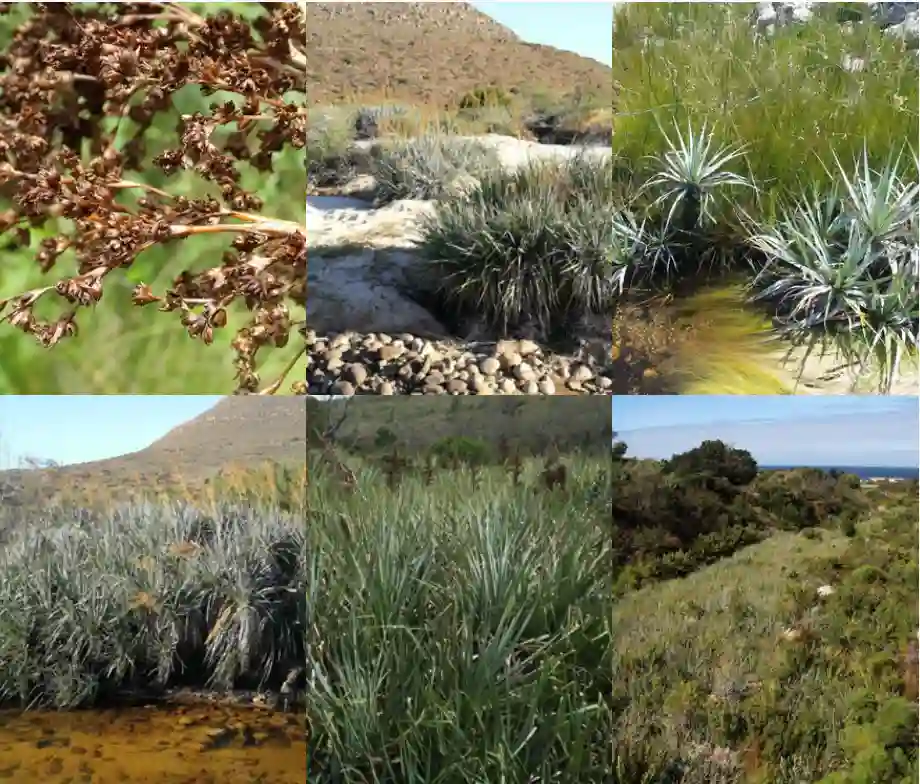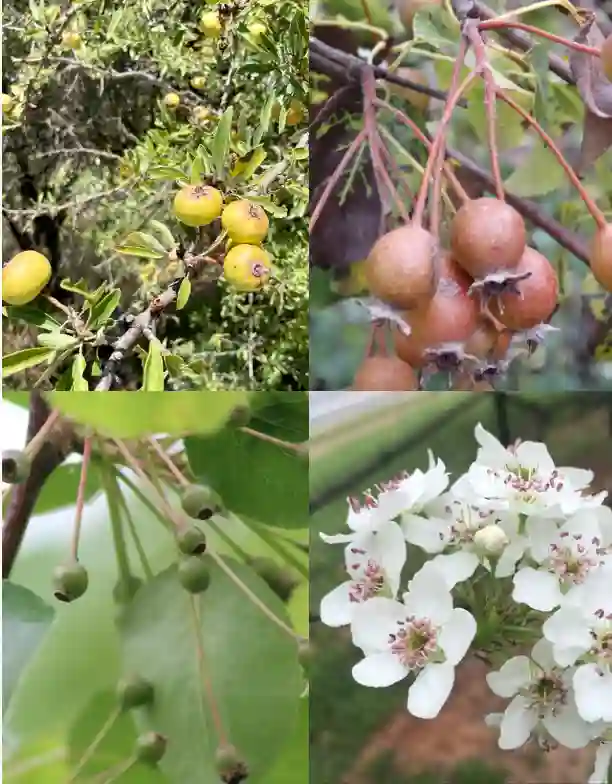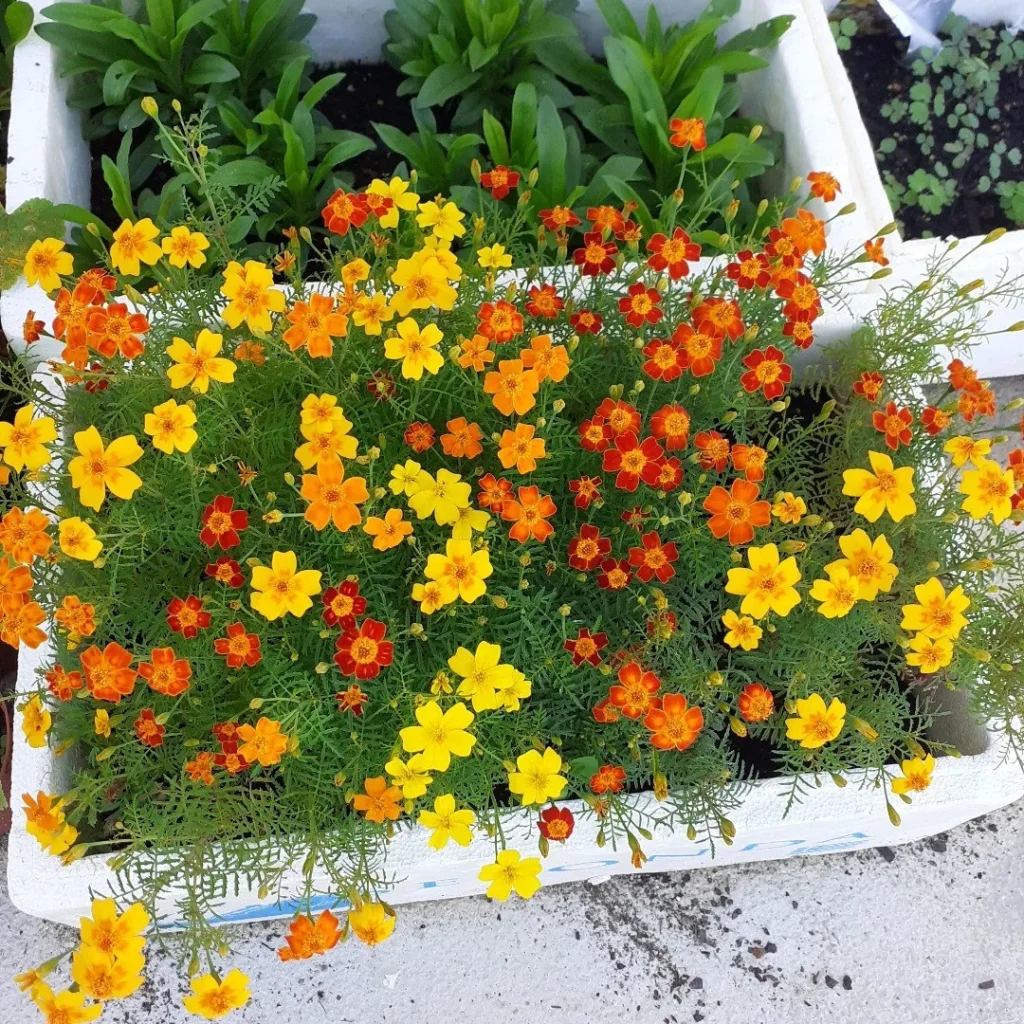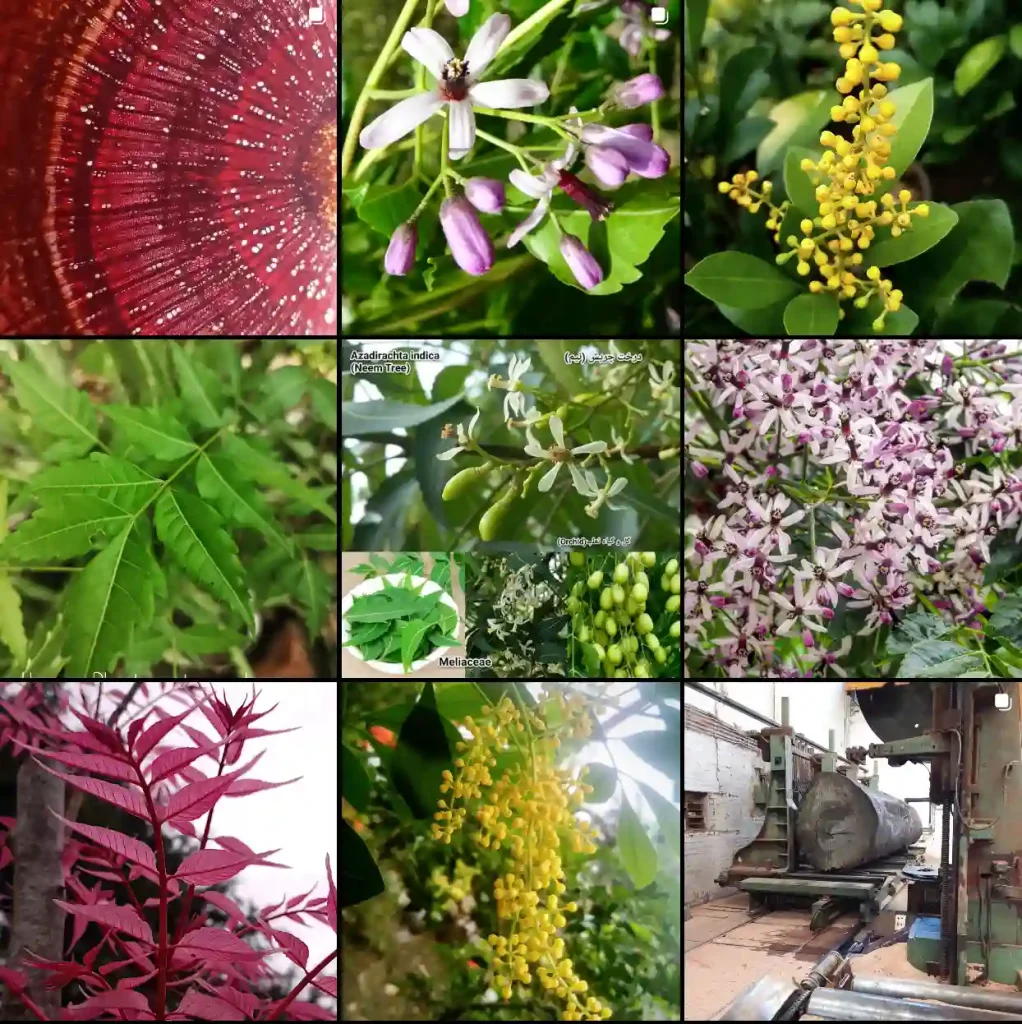My Fascination with the Apiaceae Family: A Journey of Discovery
I, Ferb Vu, have always been drawn to the world of plants. Their diversity, their resilience, and their intricate beauty never cease to amaze me. Among the countless plant families that I’ve encountered, one has always held a special place in my heart: the Apiaceae family, also known as the Umbelliferae family.
The Apiaceae Family: An Overview
The Apiaceae family is a large and diverse group of flowering plants, comprising over 451 genera and more than 3,700 species. These plants are found in a wide range of habitats, from temperate grasslands to alpine meadows, and from coastal dunes to arid deserts. They are characterized by their distinctive inflorescences, called umbels, which are flat-topped clusters of small flowers. These umbels are often surrounded by bracts, which are modified leaves that serve to protect the developing flowers.
The Apiaceae family includes many plants that are of economic importance, such as carrots, parsnips, celery, parsley, dill, fennel, coriander, cumin, and anise. These plants are valued for their edible roots, stems, leaves, seeds, and essential oils. In addition to their culinary uses, many Apiaceae plants are also used in traditional medicine and aromatherapy.
My Encounter with the Apiaceae Family
My fascination with the Apiaceae family began when I was a child. I remember spending hours in my grandmother’s garden, marveling at the diversity of plants that she grew. Among her many treasures, I was particularly drawn to the umbellifers. I was captivated by their delicate flowers, their aromatic leaves, and their unique seed heads.
As I grew older, my interest in the Apiaceae family deepened. I began to learn more about their taxonomy, their ecology, and their ethnobotanical uses. I was particularly intrigued by the wide range of compounds that these plants produce, including essential oils, coumarins, and polyacetylenes. These compounds are responsible for the distinctive flavors and aromas of many Apiaceae plants, and they also have a variety of medicinal properties.
The Genera of the Apiaceae Family
- Aciphylla J.R.Forst. & G.Forst.
- Acronema Falc. ex Edgew.
- Actinanthus Ehrenb.
- Actinolema Fenzl
- Actinotus Labill.
- Adenosciadium H.Wolff
- Aegokeras Raf.
- Aegopodium L. – 12 Species in Genus Aegopodium
- Aethusa L.
- Afroligusticum C.Norman
- Afrosciadium P.J.D.Winter
- Agasyllis Spreng.
- Alepidea F.Delaroche
- Ammi L. – 3 Species in Genus Ammi
- Ammodaucus Coss.
- Ammoides Adans.
- Ammoselinum Torr. & A.Gray
- Andriana B.-E.van Wyk
- Anethum L.
- Angelica L. – 107 Species in Genus Angelica
- Anginon Raf.
- Angoseseli Chiov.
- Anisopoda Baker
- Anisosciadium DC.
- Anisotome Hook.f.
- Annesorhiza Cham. & Schltdl.
- × Anthrichaerophyllum P.Fourn.
- Anthriscus Pers.
- Aphanopleura Boiss.
- Apiastrum Nutt.
- Apiopetalum Baill.
- Apium L. – 12 Species in Genus Apium
- Apodicarpum Makino
- Arafoe Pimenov & Lavrova
- Arctopus L.
- Arcuatopterus M.I.Sheh & R.H.Shan
- Arracacia Bancr.
- Artedia L.
- Asciadium Griseb.
- Asteriscium Cham. & Schltdl.
- Astomaea Rchb.
- Astrantia L. – 10 Species in Genus Astrantia
- Astrodaucus Drude
- Astydamia DC.
- Athamanta L.
- Aulacospermum Ledeb.
- Austropeucedanum Mathias & Constance
- Autumnalia Pimenov
- Azilia Hedge & Lamond
- Azorella Lam.
- Berberocarum Zakharova & Pimenov
- Berula W.D.J.Koch
- × Beruladium A.C.Leslie
- Bifora Hoffm.
- Bilacunaria Pimenov & V.N.Tikhom.
- Billburttia Magee & B.-E.van Wyk
- Bolax Comm. ex Juss.
- Bonannia Guss.
- Bowlesia Ruiz & Pav.
- Brachyscias J.M.Hart & Henwood
- Bunium L.
- Bupleurum L. – 218 Species in Genus Bupleurum
- Cachrys L.
- Calyptrosciadium Rech.f. & Kuber
- Cannaboides B.-E.van Wyk
- Capnophyllum Gaertn.
- Carlesia Dunn
- Caropodium Stapf & Wettst.
- Caropsis (Rouy & E.G.Camus) Rauschert
- Carum L. – 20 Species in Genus Carum
- Caucalis L.
- Cenolophium W.D.J.Koch
- Centella L. – 55 Species in Genus Centella
- Cephalopodum Korovin
- Chaerophyllopsis H.Boissieu
- Chaerophyllum L.
- Chaetosciadium Boiss.
- Chamaesciadium C.A.Mey.
- Chamaesium H.Wolff
- Chamarea Eckl. & Zeyh.
- Changium H.Wolff
- Chlaenosciadium C.Norman
- Choritaenia Benth.
- Chuanminshen M.L.Sheh & R.H.Shan
- Chymsydia Albov
- Cicuta L. – 4 Species in Genus Cicuta – Water Hemlock
- Cnidiocarpa Pimenov
- Cnidium Cusson ex Juss. – 8 Species in Genus Cnidium
- Coaxana J.M.Coult. & Rose
- Conioselinum Fisch. ex Hoffm.
- Conium L. – 6 Species in Genus Conium
- Conopodium W.D.J.Koch
- Coriandrum L.
- Cortia DC.
- Cortiella C.Norman
- Cotopaxia Mathias & Constance
- Coulterophytum B.L.Rob.
- Crithmum L.
- Cryptotaenia DC.
- Cuminum Tourn. ex L. – 4 Species in Genus Cuminum
- Cyathoselinum Benth.
- Cyclorhiza M.L.Sheh & R.H.Shan
- Cyclospermum Lag.
- Cymbocarpum DC. ex C.A.Mey.
- Cymopterus Raf.
- Cynorhiza Eckl. & Zeyh.
- Cynosciadium DC.
- Dactylaea Fedde ex H.Wolff
- Dahliaphyllum Constance & Breedlove
- Dasispermum Neck. ex Raf.
- Daucosma Engelm. & A.Gray
- Daucus L. – 45 Species in Genus Daucus
- Demavendia Pimenov
- Dethawia Endl.
- Deverra DC.
- Dichoropetalum Fenzl
- Dichosciadium Domin
- Dickinsia Franch.
- Dicyclophora Boiss.
- Dimorphosciadium Pimenov
- Diplaspis Hook.f.
- Diplolophium Turcz.
- Diplotaenia Boiss.
- Diposis DC.
- Domeykoa Phil.
- Donnellsmithia J.M.Coult. & Rose
- Dracosciadium Hilliard & B.L.Burtt
- Drusa DC.
- Ducrosia Boiss.
- Dystaenia Kitag.
- Echinophora Tourn. ex L.
- Ekimia H.Duman & M.F.Watson
- Elaeosticta Fenzl
- Eleutherospermum K.Koch
- Elwendia Boiss.
- Enantiophylla J.M.Coult. & Rose
- Endressia J.Gay
- Eremocharis Phil.
- Eremodaucus Bunge
- Ergocarpon C.C.Towns.
- Erigenia Nutt.
- Eryngium Tourn. ex L. – 253 Species in Genus Eryngium
- Eurytaenia Torr. & A.Gray
- Exoacantha Labill.
- Ezosciadium B.L.Burtt
- Falcaria Fabr.
- Fergania Pimenov
- Ferula Tourn. ex L. – 227 Species in Genus Ferula
- Ferulago W.D.J.Koch
- Ferulopsis Kitag.
- Foeniculum Mill.
- Frommia H.Wolff
- Froriepia K.Koch
- Fuernrohria K.Koch
- Galagania Lipsky
- Geocaryum Coss.
- Gingidia J.W.Dawson
- Glaucosciadium B.L.Burtt & P.H.Davis
- Glehnia F.Schmidt ex Miq.
- Glia Sond.
- Gongylosciadium Rech.f.
- Gongylotaxis Pimenov & Kljuykov
- Grafia Rchb.
- Grammosciadium DC.
- Gymnophyton Clos
- Haloselinum Pimenov
- Hansenia Turcz.
- Haplosciadium Hochst.
- Harbouria J.M.Coult. & Rose
- Harperella Rose
- Harrysmithia H.Wolff
- Haussknechtia Boiss.
- Helania L.Q.Zhao & Y.Z.Zhao
- Hellenocarum H.Wolff
- Helosciadium W.D.J.Koch
- Heptaptera Margot & Reut.
- Heracleum L. – 92 Species in Genus Heracleum
- Hermas L.
- Heteromorpha Cham. & Schltdl.
- Hladnikia Rchb.
- Hohenackeria Fisch. & C.A.Mey.
- Homalocarpus Hook. & Arn.
- Homalosciadium Domin
- Horstrissea Greuter, Gerstb. & Egli
- Hyalolaena Bunge
- Hymenidium Lindl.
- Hymenolaena DC.
- Itasina Raf.
- Johrenia DC.
- Kadenia Lavrova & V.N.Tikhom.
- Kafirnigania Kamelin & Kinzik.
- Kailashia Pimenov & Kljuykov
- Kalakia Alava
- Kamelinia F.O.Khass. & I.I.Malzev
- Kandaharia Alava
- Karatavia Pimenov & Lavrova
- Karnataka P.K.Mukh. & Constance
- Kedarnatha P.K.Mukh. & Constance
- Kelussia Mozaff.
- Kenopleurum Candargy
- Keraymonia Farille
- Kitagawia Pimenov
- Klotzschia Cham.
- Komaroviopsis Doweld
- Korshinskia Lipsky
- Kozlovia Lipsky
- Krasnovia Popov ex Schischk.
- Krubera Hoffm.
- Kundmannia Scop.
- Kuramosciadium Pimenov, Kljuykov & Tojibaev
- Ladyginia Lipsky
- Lagoecia L.
- Lalldhwojia Farille
- Laser Borkh.
- Laserocarpum Spalik & Wojew.
- Laserpitium L.
- Lecokia DC.
- Ledebouriella H.Wolff
- Lefebvrea A.Rich.
- Leiotulus Ehrenb.
- Lereschia Boiss.
- Leutea Pimenov
- Levisticum Hill – 3 Species in Genus Levisticum
- Libanotis Haller ex Zinn
- Lichtensteinia Cham. & Schltdl.
- Lignocarpa J.W.Dawson
- Ligusticopsis Leute
- Ligusticum L.
- Lilaeopsis Greene
- Limnosciadium Mathias & Constance
- Lipskya Nevski
- Lisaea Boiss.
- Lithosciadium Turcz.
- Lomatium Raf. – 100 Species in Genus Lomatium
- Lomatocarpa Pimenov
- Lomatocarum Fisch. & C.A.Mey.
- Mackinlaya F.Muell.
- Magadania Pimenov & Lavrova
- Magydaris W.D.J.Koch ex DC.
- Marlothiella H.Wolff
- Mastigosciadium Rech.f. & Kuber
- Mathiasella Constance & C.L.Hitchc.
- Mediasia Pimenov
- Meeboldia H.Wolff
- Melanosciadium H.Boissieu
- Meum Mill.
- Micropleura Lag.
- Microsciadium Boiss.
- Modesciadium P.Vargas & Jim.Mejías
- Mogoltavia Korovin
- Molopospermum W.D.J.Koch
- Musineon Raf.
- Mutellina Wolf
- Myrrhidendron J.M.Coult. & Rose
- Myrrhis Mill.
- Nanobubon Magee
- Naufraga Constance & Cannon
- Neoconopodium (Koso-Pol.) Pimenov & Kljuykov
- Neogaya Meisn.
- Neogoezia Hemsl.
- Neomuretia Kljuykov, Degtjareva & Zakharova
- Neonelsonia J.M.Coult. & Rose
- Neoparrya Mathias
- Niphogeton Schltdl.
- Nirarathamnos Balf.f.
- Normantha P.J.D.Winter & B.-E.van Wyk
- Nothosmyrnium Miq.
- Notiosciadium Speg.
- Notobubon B.-E.van Wyk
- Oedibasis Koso-Pol.
- Oenanthe L.
- Oligocladus Chodat & Wilczek
- Oliveria Vent.
- Opoidia Lindl.
- Opopanax W.D.J.Koch
- Opsicarpium Mozaff.
- Oreocome Edgew.
- Oreocomoides Kljuykov
- Oreocomopsis Pimenov & Kljuykov
- Oreonana Jeps.
- Oreoschimperella Rauschert
- Orlaya Hoffm. – 3 Species in Genus Orlaya
- Ormopterum Schischk.
- Ormosciadium Boiss.
- Oschatzia Walp.
- Osmorhiza Raf.
- Ostericum Hoffm.
- Ottoa Kunth
- Oxypolis Raf.
- Pachypleurum Ledeb.
- Palimbia Besser ex DC.
- Paraligusticum V.N.Tikhom.
- Parapimpinella Fern.Prieto, Sanna & Arjona
- Paraselinum H.Wolff
- Parasilaus Leute
- Pastinaca L.
- Pastinacopsis Golosk.
- Paulita Soják
- Pedinopetalum Urb. & H.Wolff
- Pentapeltis Bunge
- Perideridia Rchb.
- Perissocoeleum Mathias & Constance
- Petagnaea Caruel
- Petroedmondia Tamamsch.
- Petroselinum Hill
- Peucedanum L.
- Phellolophium Baker
- Phlojodicarpus Turcz. ex Ledeb.
- Phlyctidocarpa Cannon & W.L.Theob.
- Physospermopsis H.Wolff
- Physospermum Cusson
- Physotrichia Hiern
- Pilopleura Schischk.
- Pimpinella L. – 160 Species in Genus Pimpinella
- Pinda P.K.Mukh. & Constance
- Platysace Bunge
- Pleurospermopsis C.Norman
- Pleurospermum Hoffm.
- Podistera S.Watson
- Polemannia Eckl. & Zeyh.
- Polemanniopsis B.L.Burtt
- Polytaenia DC.
- Polyzygus Dalzell
- Portenschlagiella Tutin
- Postiella Kljuykov
- Pozoa Lag.
- Prangos Lindl.
- Prionosciadium S.Watson
- Psammogeton Edgew.
- Pseudocannaboides B.-E.van Wyk
- Pseudocarum C.Norman
- Pseudoridolfia Reduron, Mathez & S.R.Downie
- Pseudoselinum C.Norman
- Pseudotrachydium (Kljuykov, Pimenov & V.N.Tikhom.) Pimenov & Kljuykov
- Pternopetalum Franch.
- Pterocyclus Klotzsch
- Pterygopleurum Kitag.
- Ptilimnium Raf.
- Ptychotis W.D.J.Koch
- Pycnocycla Lindl.
- Pyramidoptera Boiss.
- Registaniella Rech.f.
- Rhabdosciadium Boiss.
- Rhizomatophora Pimenov
- Rhodosciadium S.Watson
- Rhopalosciadium Rech.f.
- Rhysopterus J.M.Coult. & Rose
- Ridolfia Moris
- Rivasmartinezia Fern.Prieto & Cires
- Rohmooa Farille & Lachard
- Rupiphila Pimenov & Lavrova
- Rutheopsis A.Hansen & G.Kunkel
- Sajanella Soják
- Sanicula L.
- Saposhnikovia Schischk.
- Scaligeria DC.
- Scandia J.W.Dawson
- Scandix L.
- Scaraboides Magee & B.-E.van Wyk
- Schoenolaena Bunge
- Schoenoselinum Jim.Mejías & P.Vargas
- Schrenkia Fisch. & C.A.Mey.
- Schtschurowskia Regel & Schmalh.
- Schulzia Spreng.
- Sclerochorton Boiss.
- Sclerosciadium W.D.J.Koch ex DC.
- Sclerotiaria Korovin
- Scrithacola Alava
- Selinopsis Coss. & Durieu ex Batt.
- Selinum L.
- Semenovia Regel & Herder
- Seseli L.
- Seselopsis Schischk.
- Shomalia Lyskov
- Shoshonea Evert & Constance
- Shrirangia Gosavi, Madhav & Chandore
- Siculosciadium C.Brullo, Brullo, S.R.Downie & Giusso
- Silaum Mill.
- Siler Mill.
- Sillaphyton Pimenov
- Silphiodaucus (Koso-Pol.) Spalik, Wojew., Banasiak, Piwczyński & Reduron
- Similisinocarum Cauwet & Farille
- Sinocarum H.Wolff ex R.H.Shan & F.T.Pu
- Sinolimprichtia H.Wolff
- Sison L.
- Sium L.
- Sivadasania N.Mohanan & Pimenov
- Smyrniopsis Boiss.
- Smyrnium L.
- Spananthe Jacq.
- Spermolepis Raf.
- Sphaenolobium Pimenov
- Sphaerosciadium Pimenov & Kljuykov
- Sphallerocarpus Besser ex DC.
- Spiroceratium H.Wolff
- Spuriopimpinella (H.Boissieu) Kitag.
- Stefanoffia H.Wolff
- Steganotaenia Hochst.
- Stenocoelium Ledeb.
- Stenosemis E.Mey. ex Sond.
- Stenotaenia Boiss.
- Stewartiella Nasir
- Stoibrax Raf.
- Symphyoloma C.A.Mey.
- Synclinostyles Farille & Lachard
- Szovitsia Fisch. & C.A.Mey.
- Taenidia Drude
- Taeniopetalum Vis.
- Tamamschjanella Pimenov & Kljuykov
- Tamamschjania Pimenov & Kljuykov
- Tana B.-E.van Wyk
- Tauschia Schltdl.
- Tetrataenium (DC.) Manden.
- Thamnosciadium Hartvig
- Thapsia L.
- Thaspium Nutt.
- Thecocarpus Boiss.
- Tiedemannia DC.
- Tilingia Regel & Tiling
- Todaroa Parl.
- Tongoloa H.Wolff
- Tordyliopsis DC.
- Tordylium Tourn. ex L.
- Torilis Adans.
- Trachydium Lindl.
- Trachyspermum Link
- Trepocarpus Nutt. ex DC.
- Tricholaser Gilli
- Trigonosciadium Boiss.
- Trinia Hoffm.
- Trocdaris Raf.
- Trochiscanthes W.D.J.Koch
- Tschulaktavia Bajtenov ex Pimenov & Kljuykov
- Turgenia Hoffm.
- Turgeniopsis Boiss.
- Vanasushava P.K.Mukh. & Constance
- Vesper R.L.Hartm. & G.L.Nesom
- Vicatia DC.
- Villarrealia G.L.Nesom
- Vinogradovia Bani, D.A.German & M.A.Koch
- Visnaga Mill. – 3 Species in Genus Visnaga
- Vvedenskya Korovin
- Xanthogalum Avé-Lall.
- Xanthosia Rudge
- Xatardia Meisn. & Zeyh.
- Xyloselinum Pimenov & Kljuykov
- Yabea Koso-Pol.
- Yildirimlia Doğru-Koca
- Zeravschania Korovin
- Zizia W.D.J.Koch – 3 Species in Genus Zizia
- Zosima Hoffm.
The Importance of the Apiaceae Family
The Apiaceae family is of great importance to humans. These plants provide us with food, medicine, and other valuable resources. They also play an important role in the ecosystem, providing food and shelter for a variety of animals.
In addition to their practical uses, Apiaceae plants are also a source of beauty and wonder. Their delicate flowers, their aromatic leaves, and their unique seed heads are a delight to the senses. I encourage everyone to take the time to appreciate the beauty and diversity of the Apiaceae family.
My Continuing Journey
My journey of discovery with the Apiaceae family is far from over. I continue to learn more about these fascinating plants every day. I am particularly interested in their potential for use in sustainable agriculture and medicine. I believe that the Apiaceae family has a lot to offer us, and I am excited to see what the future holds.
In conclusion, the Apiaceae family is a large and diverse group of plants that are of great importance to humans and the ecosystem. These plants provide us with food, medicine, and other valuable resources. They are also a source of beauty and wonder. I encourage everyone to take the time to appreciate the beauty and diversity of the Apiaceae family.
As I continue my journey of discovery with these plants, I am filled with a sense of awe and wonder. The Apiaceae family is a testament to the incredible diversity and resilience of life on Earth. I am grateful for the opportunity to learn from these plants and to share my knowledge with others.
If i die, water my plants!



